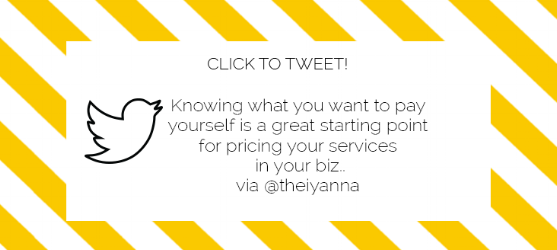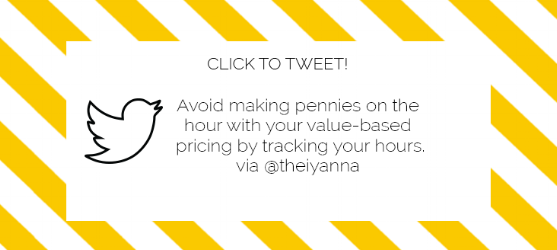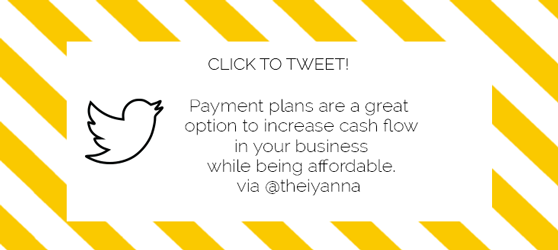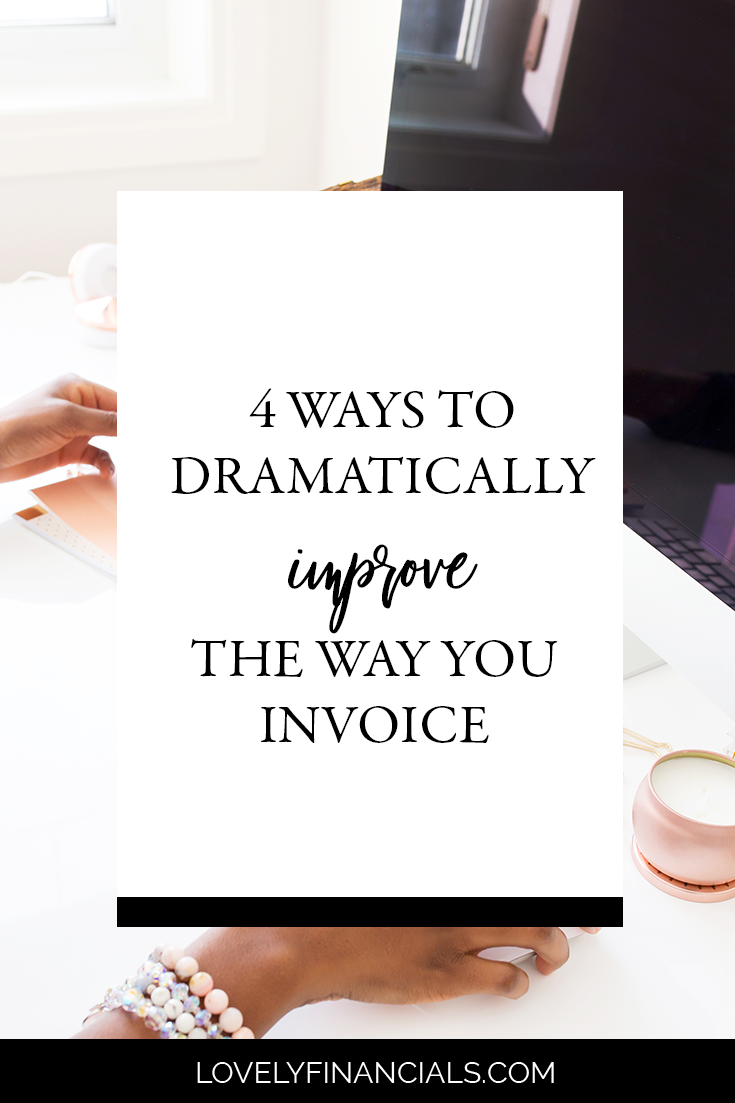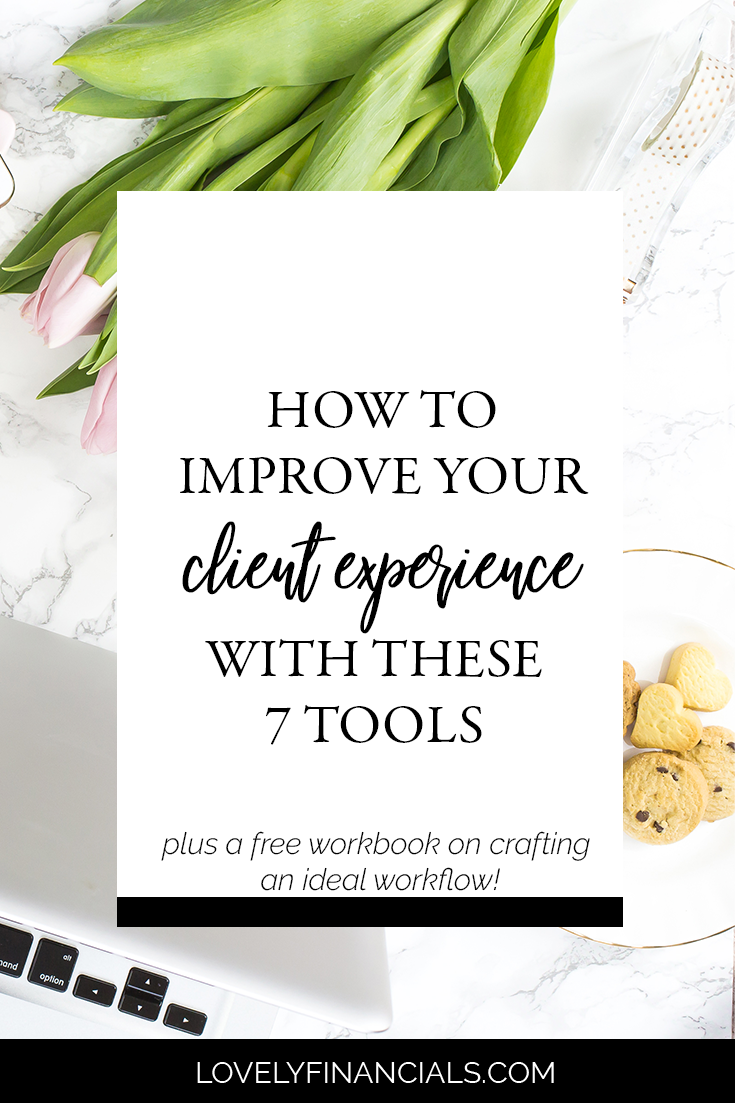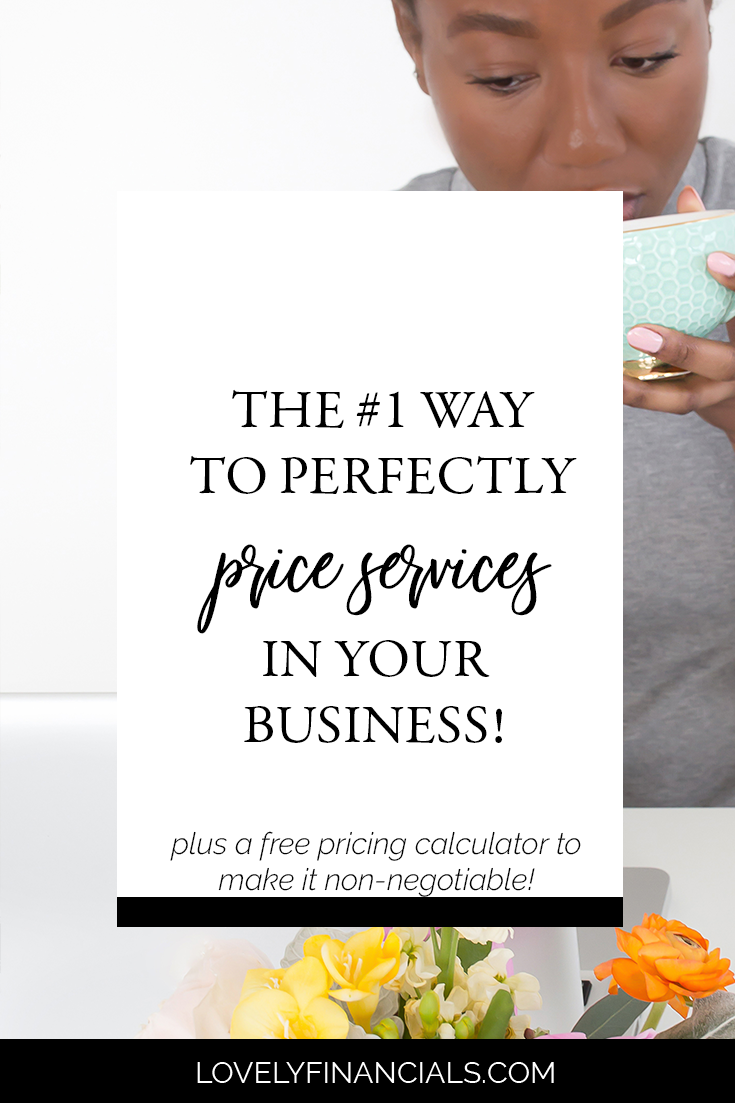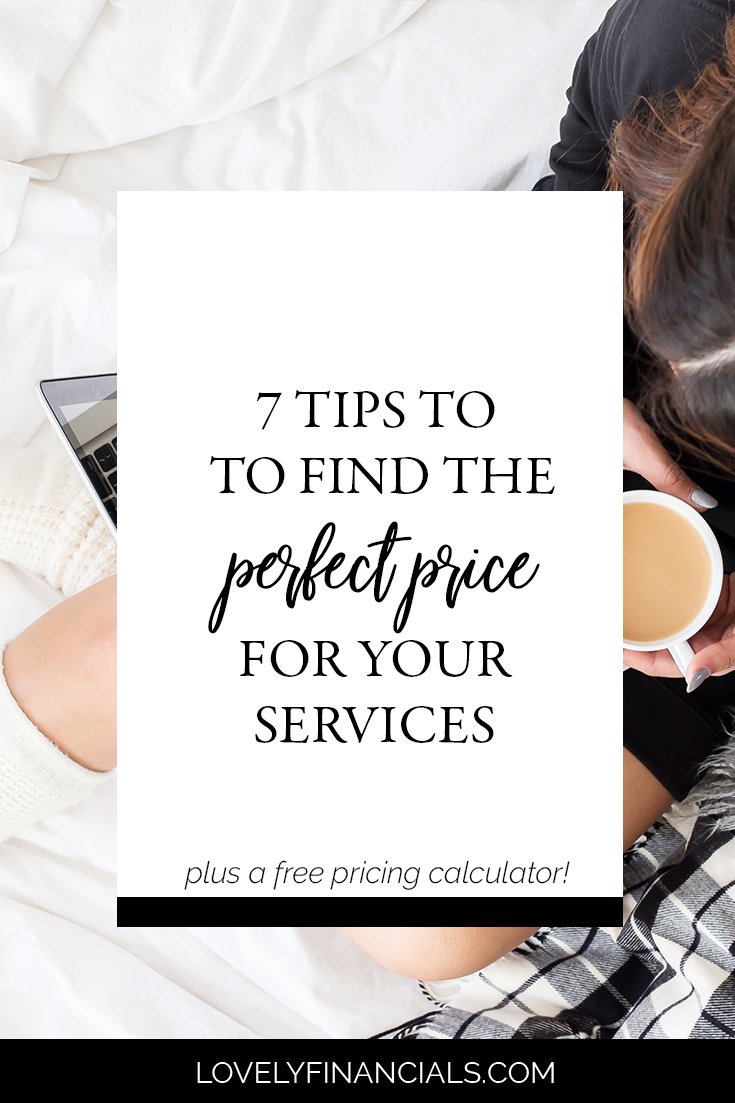7 Ways to Find the Perfect Price for your Service-Based Biz
December 5, 2016
Please note that this post contains affiliate links. Read my legal page for further reference.
Pricing your service-based business can be tough. Probably one of the hardest things you will have to do. If done right, it shapes how profitable your business will be. If you charge too low, you’re selling yourself short. If you overcharge your services based on feelings and unicorns, you will quickly be slapped back down to earth.
As a bookkeeper, I love making numbers into a story for others. But I face the same problems with pricing my bookkeeping services. You have to figure out things like what is your perceived value to potential clients? Will I back down if someone who I thought was my target market thinks that I charge too much. If I accidentally charge too little for a recurring service, what will happen once I raise my prices? I gained the experience, right?
All of these feelings of uncertainty are so real with entrepreneurs. Those who have became my client, or colleague alike. Finding the perfect price is like trying perfect your eyeliner on BOTH eyes. Could be out of reach and close to nearly impossible to most.
I want to share seven tips on how you can perfectly pricing your service!
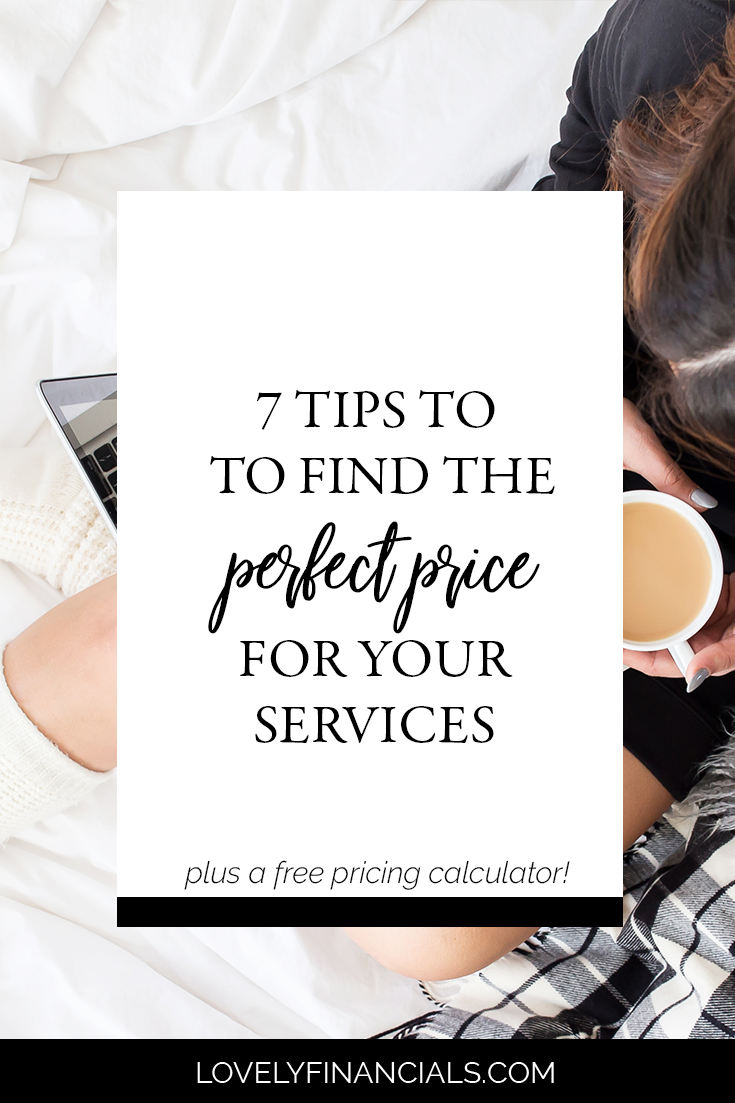
1. How much do you want to pay yourself?
To get the most realistic pricing structure, you first have to know what you’d like to pay yourself. It can be a small contribution to your household, to begin with. Then you can slowly increase your prices every quarter or six months. Increasing your price along with your expertise can help replace your income.
Your business can potentially support your life if you make sound decisions on pricing now.
I know there are countless of women entrepreneurs who have partners or spouses who can carry the financial weight of the home. What about those women who are the sole breadwinners? Single women or single parents? What about those who are paying for their spouses to go to graduate school. Or those who have partners laid off unexpectedly?
This is all too real for my situation. Next year, my partner will be attending medical school. Guess who will be responsible for us not having to live off of student loans?! This girl with two thumbs, that’s who.
It’s super sexy to say that you want to put the earnings right back into your business. But it’s not always realistic for those who don’t have that luxury in their personal life.
But let’s also not get carried away.
According to Profit First, you shouldn’t be taking more than 50% of your revenues as self-pay. This will not create a profitable business. So a starting point I like to do is figure out what I’d like to contribute, then double if for my revenue goal.
** Quick tip: Even if you feel like you’re not making enough to pay yourself, start small. You can start with as little as $25 a month then move the needle up as your business income increases.
2. What is your competition charging?
Finding out what your competition charges is one of the only times you should compare. Looking at what your competition is doing while not self-loathing is beneficial in this step. Do the research on the average cost of similar service.
Don’t take this as a way to drop your prices extremely low because the competition won’t. You will be selling yourself short.
Comparing prices is to understand the perceived value of the target audience for the services you offer.
How much experience do you have?
Couple this comparison on how much experience you have. I’m not going to charge as if I’ve been in business for 5+ years because I can’t bring myself to shortchange my experience.
As a newbie business owner, getting people to believe your expertise is difficult.
If you’re in the earliest stages of your business or new service package, get beta testers. They will go through your offer so you can gain that experience before even launch it. This will give you the confidence you need to price your service what it’s worth.
Want to learn how to price your services for profit?!
Download my FREE pricing calculator below now!
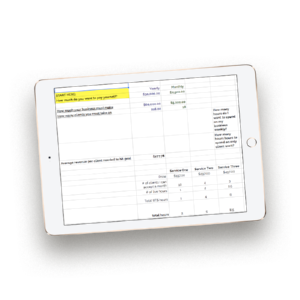
This will even help you with scary pricing…
So you’ve done your due diligence in ensuring your service has been tested with an excellent client experience. You know that you’ve been improving the quality of service for your clients. The receipts of clients gushing about you on social and testimonials tell yous so.
But wait, have you even been asking for testimonials?! Not asking for feedback is one of the biggest mistakes that we do as business owners. I know I have done this, but my new workflow has fit this into my client experience.
Don’t be like me and start this practice as soon as you start your business!
3. On average, how long will it take you to complete the service?
Even if you’re not charging hourly, you still want to be sure you’re not working for pennies on the hour. It will absolutely suck if you’re setting a fixed rate then you realize that you’re only making $10/hr once the project is complete.
This was my biggest problem when I was doing graphic design for a short stint. I didn’t have a streamlined process so I had no idea how long each task would take. It ended that I stretched myself thin. I definitely didn’t make enough to sustain that part of my business endeavor.
Another example where accurately pricing your fixed rate service is through photography.
For example:
A photographer has a package for $250. Included in this package are 15 photos, 1 hr of shooting on location, and one round of correction.
- It takes you 30 minutes to get the location
- 1 hour to shoot
- 2 hours to edit
- 1 hour to do correct any feedback
How much did the photographer make an hour? Did they have a system in place which made decrease wasted time?
So you do charge hourly…
VAs are an integral part of your business when you’re ready to onboard. If you’ve made your VA practice into an actual business, you would still have to pay business taxes like the rest of us. Instead of charging what you would at a regular job, you would have to double what you’d make as an employee to ensure the biz stays afloat.
People get flabbergasted (which I don’t understand why) when VAs charge $30/hr. You know that to remain profitable; they can only take $15/hr for their self-pay?
Knowing this pricing factor, I will wait to build my team.
4. Consider your overhead
If you’ve been following good bookkeeping practices, you will know your monthly expenses. If not, hit me up!
Or if you’ve been keeping a spreadsheet that tracks all of your business income and expenses, you will know how much you need to cover expenses.
Understand your fixed costs (these are things that are the same every month):
- Web hosting – like Squarespace of HostGator
- Email marketing – like Convertkit
- Social media management – like Coschedule
- Accounting software – like Xero
Now think about how much it would cost to market this service. For those creating a new offer there are things to consider like hiring a copywriter, temporary VA, social media manager, or launch strategist?
You will also have to consider advertisements like Facebook or Pinterest Ads.
What other fees do you think will come?
Now we’re going to talk about how to deliver your pricing to your audience to create confidence in it!
5. Always have your different pricing structures ready
There is nothing more awkward than hearing someone pull prices from thin air. When I started my bookkeeping business, I did just this. I only had a starting price, but did not have my add-on services priced and in place when I sent the potential client a proposal.
You can guess that I got a big NO to work with her.
I learned from this lesson.
If you don’t have all of your pricing on your website, create a price sheet to reference BEFORE getting on calls with clients. Have this price sheet ready to go at all times! A handy price sheet is especially great if you have add-on services for your base pricing. Evaluate it every month, or at least quarter.
You can see where you’ve come from the beginning steps of your business and note why your prices have gone up.
Want to learn how to price your services for profit?!
Download my FREE pricing calculator below now!

6. Should you have payment plans?
Are payment plans helpful?
I think so, if done right. Payment plans can increase the cash flow of your business while making your service or product financially attainable. I see payment plans often when I am looking at course launches. It’s not the best for the consumer because they don’t have all of the funds for the course but it can help you make more sales.
After doing some research, payment plans charge about 15-20%
7. Tier pricing
At first, I wasn’t the biggest fan of tier pricing.
But having different levels of pricing can take out the extra task figuring out add-on services. At the top of 2017, my monthly bookkeeping service will be tier-based.
The choice of incoporating tier pricing came from doing some market research, people need different services at different price points. This was not helpful with having only one starting point then going from there.
Will you list your prices on your website?
I am a huge advocate for listing your starting prices on your site. It alleviates you getting on discovery calls with people who are not ready to invest your service.
What I love seeing are services for different budgets. This way you’re serving your target audience at various financial points. I don’t know anyone who wouldn’t appreciate that.
Thank you so much for reading! I hope these 7 tips have been helpful for you and your business! In what ways are you going to improve your pricing? Use my FREE pricing calculator to help you take the guessing out of pricing your services! Don’t forget to share!
Want to learn how to price your services for profit?!
Download my FREE pricing calculator below now!

Top Episodes to Check Out
Revitalizing Your Daily Routine: Easy Ways to Infuse Energy and Positivity
Nurturing Self-Care: Prioritizing Your Well-being in a Busy World
Embracing Simplicity: The Art of Minimalistic Living
Weekly wisdom for faith-filled finances.
Get bite-sized tips on increasing profit, leveraging tax strategy, and stewarding your cash flow—rooted in biblical truth. Build wealth, heal your money story, and lead your business from a place of overflow.
The Overflow Report
THE EMAIL LIST
WEBSITE DESIGN CREDIT
Terms and Conditions
Privacy Policy
Join my email series
Hompage
About
portal
Podcast
Work with us
Browse Around
LFG
Iyanna Vaughn, founder of Lovely Financials Group, believes that financial management significantly impacts one's life. For over 8 years, she has helped business owners increase their profit & create healthy cash flow.
Paragraph
Paragraph
